Explore the test cases
Installation
Download
./tests root directory with$ git clone http://github.com/NEMO-ocean/NEMO-examples
Compilation
The compilation of the test cases is very similar to the manner the reference configurations are compiled. If you are not familiar on how to compile NEMO, it is first recomended to read the instructions.
-r option,
test cases can be compiled by the use of makenemo with -a option.$ ./makenemo -n 'WAD2' -a 'WAD' -m 'my_arch' -j '4'
Run and analysis
There no requirement of specific input file for the test_cases presented here. The XIOS xml input files and namelist are already setup correctly. For detailed description and Jupyter notebook, the reader is directed on the NEMO test cases repository
The description below is a brief advertisement of some test cases.
List of test cases
VORTEX
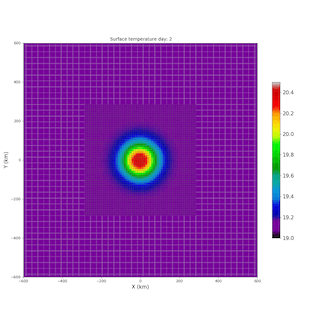
This test case illustrates the propagation of an anticyclonic eddy over a Beta plan and a flat bottom. It is implemented here with an online refined subdomain (1:3) out of which the vortex propagates. It serves as a benchmark for quantitative estimates of nesting errors as in [T1], [T2] or [T3]. The animation displays sea surface temperature.
LOCK_EXCHANGE
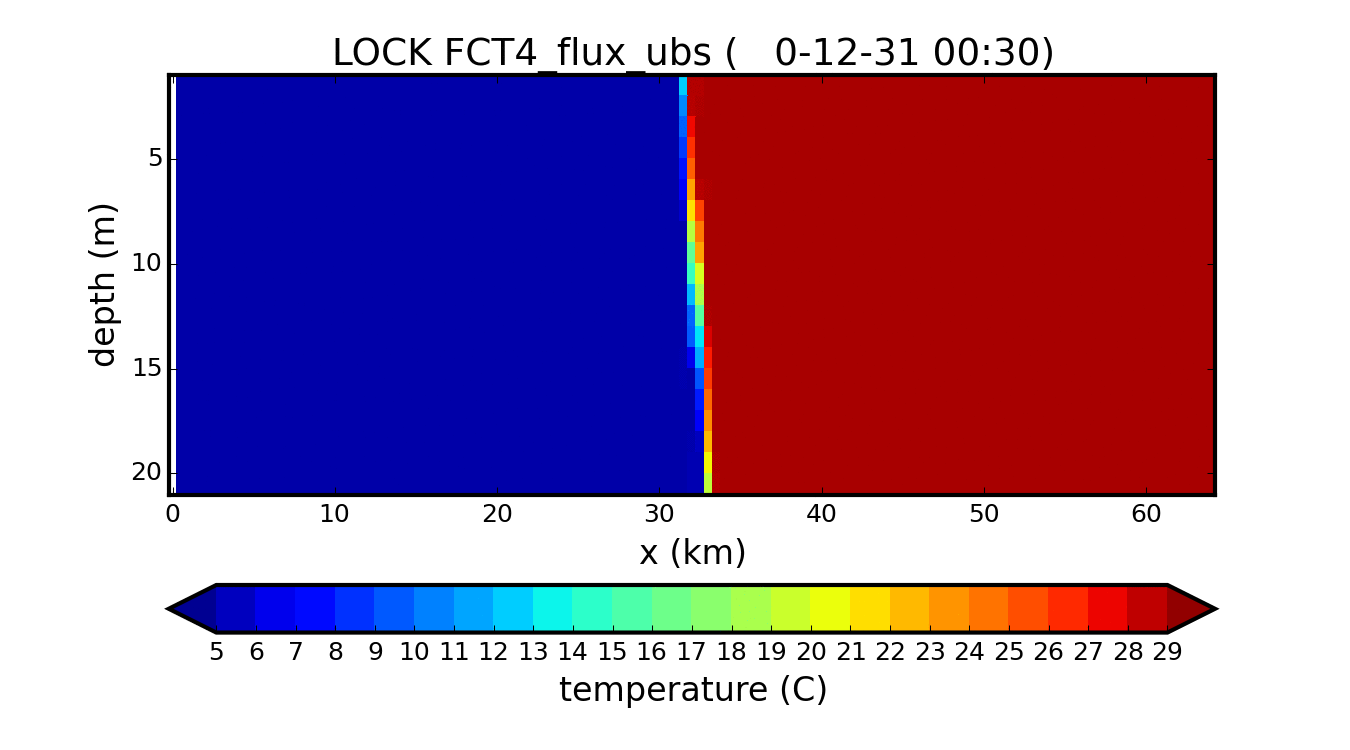
The LOCK EXCHANGE experiment is a classical fluid dynamics experiment that has been adapted by [T4] for testing advection schemes in ocean circulation models. It has been used by several authors including [T5] and [T6]. The LOCK EXCHANGE experiment can in particular illustrate the impact of different choices of numerical schemes and/or subgrid closures on spurious interior mixing. Here the animation of the LOCK_EXCHANGE test case using the advection scheme FCT4 (forth order) for tracer and ubs for dynamics.
OVERFLOW
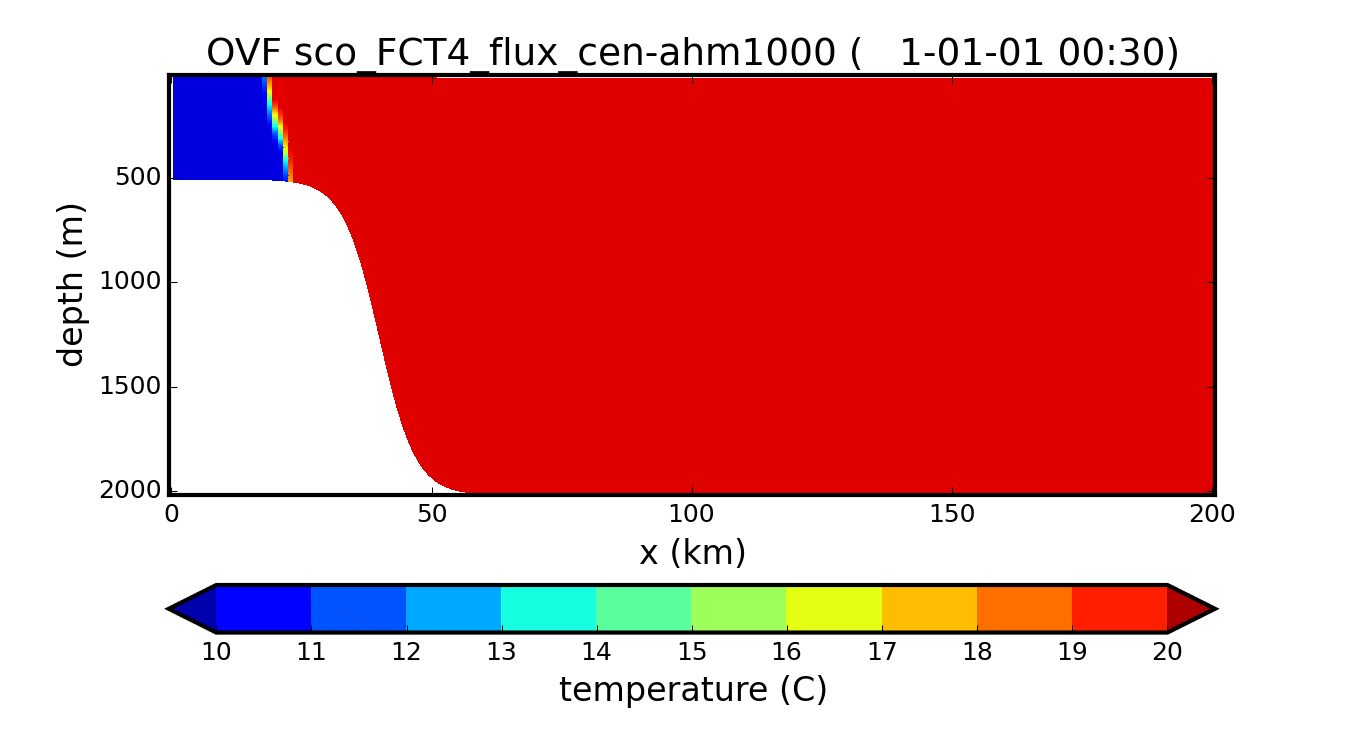
The OVERFLOW experiment illustrates the impact of different choices of numerical schemes and/or subgrid closures on spurious interior mixing close to bottom topography. The OVERFLOW experiment is adapted from the non-rotating overflow configuration described in [T4] and further used by [T6]. Here the animation of the OVERFLOW test case in sigma coordinate with the fourth-order advection scheme FCT4.
WAD
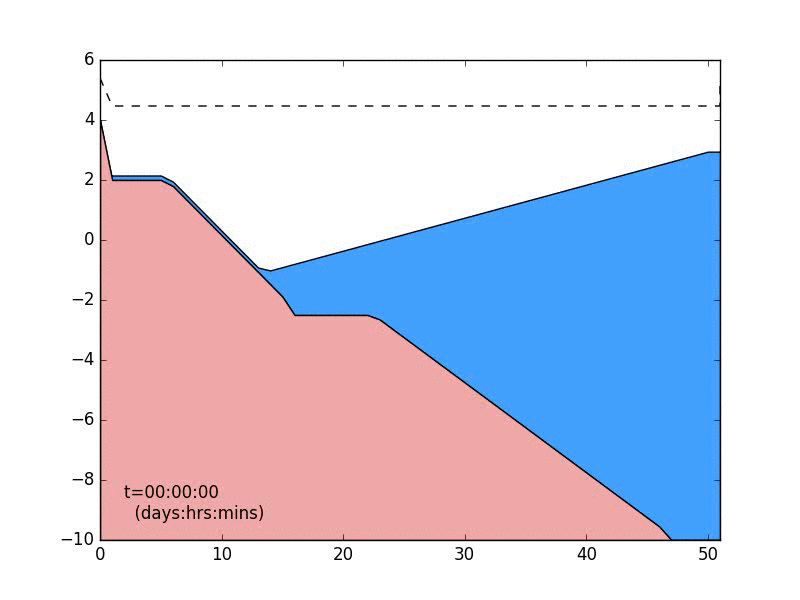
A set of simple closed basin geometries for testing the Wetting and drying capabilities. Examples range from a closed channel with EW linear bottom slope to a parabolic EW channel with a Gaussian ridge. Here the animation of the test case 7. This test case is a simple linear slope with a mid-depth shelf with an open boundary forced with a sinusoidally varying ssh. This test case has been introduced to emulate a typical coastal application with a tidally forced open boundary with an adverse SSH gradient that, when released, creates a surge up the slope. The parameters are chosen such that the surge rises above sea-level before falling back and oscillating towards an equilibrium position.
DOME
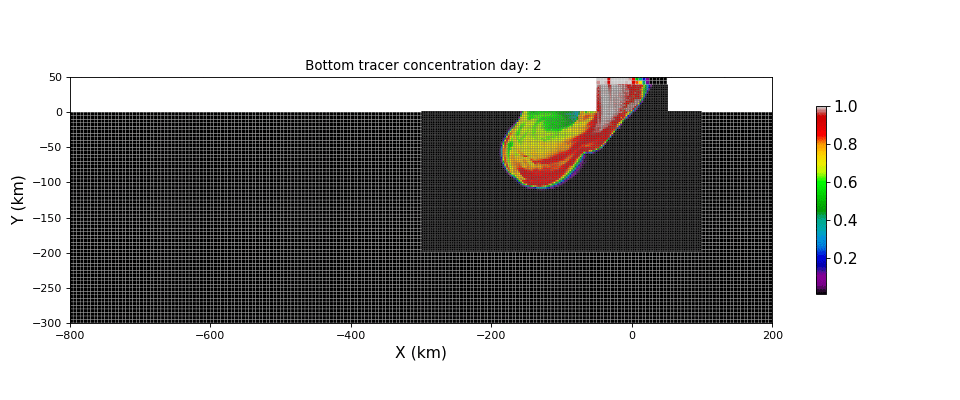
The “DOME” experiment (DOME: Dynamics of Overflow Mixing and Entrainment) is often used to assess numerical models in the overflow context. The reader is referred to [T7] for a complete description of the setup which is a simplified representation of the Denmark strait overflow. A geostrophically balanced inflow of 7.8 Sv with a buoyancy anomaly ∆𝑏 = 0.019 𝑚 𝑠−2 is imposed at the Northern boundary of the 600 m deep inlet, which ultimately creates a westward gravity current along a constant 1% slope.
This configuration enlightens the impact of numerical mixing in setting the final depth of the buoyant plume. Different vertical coordinate choices lead, in particular, to significantly different results which has been used to test the “vertical nesting” strategy with AGRIF. The animation above displays the evolution of a passive tracer at the bottom, injected with a value of 1 at the northern boundary. The darker region is an embedded 1:2 refinement with terrain-following vertical coordinates while the rest of the domain has geopotential vertical coordinates.
ISOMIP
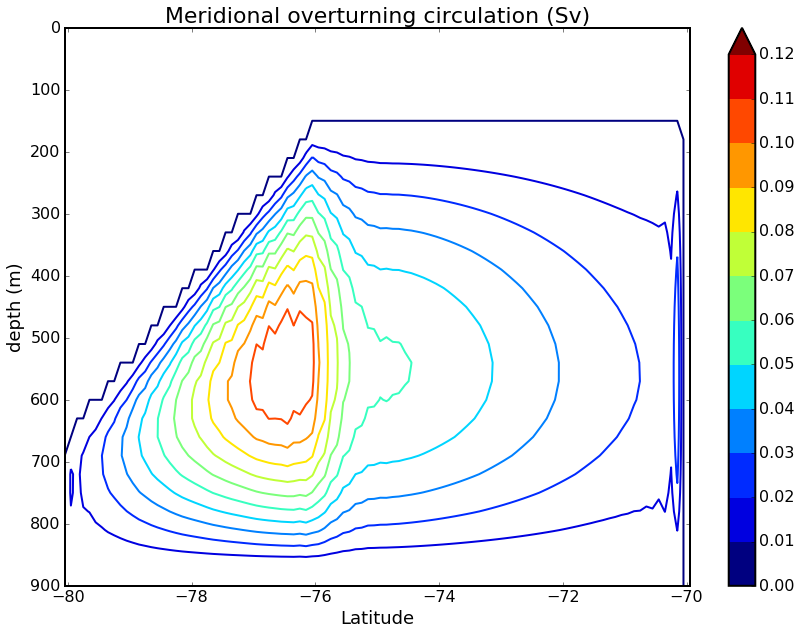
The purpose of this test case is to evaluate the impact of various schemes and new development with the iceshelf cavities circulation and melt. This configuration served as initial assesment of the ice shelf module in [T8] and [T9]. The figure (meridional overturning circulation) illustrates the circulation generated after 10000 days by the ice shelf melting (ice pump).
ICE_AGRIF
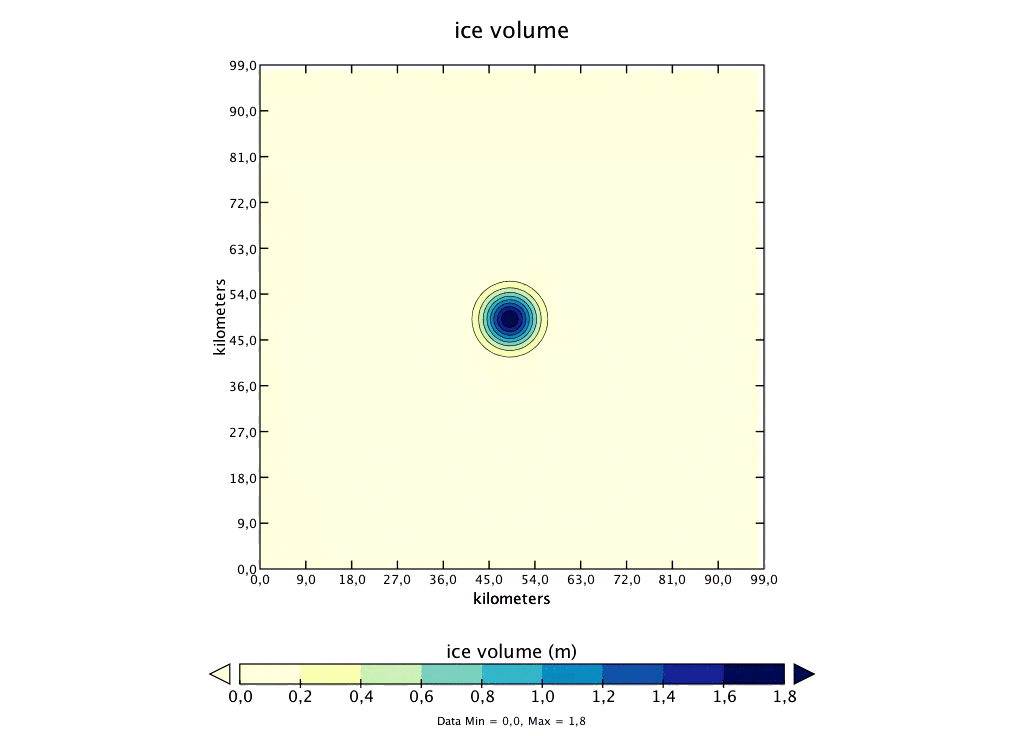
This test case illustrates the advection of an ice patch across an East/West and North/South periodic channel over a slab ocean (i.e. one ocean layer), and with an AGRIF zoom (1:3) in the center. The purpose of this configuration is to test the advection of the ice patch in and across the AGRIF boundary. One can either impose ice velocities or ice-atm. Stresses and let rheology define velocities (see README for details)
ICE_ADV2D
This test case illustrates the advection of an ice patch across an East/West and North/South periodic channel over a slab ocean (i.e. one ocean layer). The configuration is similar to ICE_AGRIF, except for the AGRIF zoom. The purpose of this configuration is to test the advection schemes available in the sea-ice code (for now, Prather and Ultimate-Macho from 1st to 5th order), especially the occurence of overshoots in ice thickness.
ICE_ADV1D
This experiment is the classical [T10] test case, which has been used in [T11], and in which very specific shapes of ice concentration, thickness and volume converge toward the center of a basin. Convergence is unidirectional (in x) while fields are homogeneous in y. The purpose of this configuration is to test the caracteristics of advection schemes available in the sea-ice code (for now, Prather and Ultimate-Macho from 1st to 5th order), especially the constitency between concentration, thickness and volume, and the preservation of initial shapes.
ICE_RHEO
Test ice rheologies. A complete descroption of this test case can be found here
CANAL
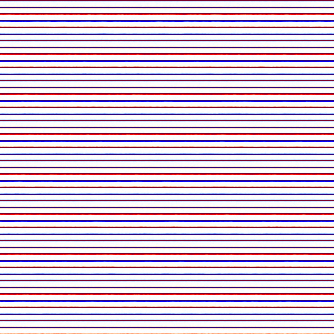
The CANAL test case is a simple configuration which size and basic characteristics can be directly changed trough the namelist. It comes with several boundary condition (closed, east-west periodic, bi-periodic), several initial states and associated geostrophic currents (zonal jets or vortex). It is very convenient to test/illustrate the impact of the different numerical schemes available in NEMO.
BENCH
Benchmark configuration. Allow to run any configuration (including ORCA type or BDY) with idealized grid and initial state so it does not need any input file other than the namelists. As usual, all configuration changes can be done through the namelist. We provide 3 examples of namelist_cfg to mimic ORCA1, OR025 or ORCA12 configurations. By default do not produce any output file. An extensive description of BENCH is abailable in [T12].
CPL_OASIS
This test case checks the OASIS interface in OCE/SBC, allowing to set up a coupled configuration through OASIS. See CPL_OASIS/README.md for more information.
DIA_GPU
This is a demonstrator of diagnostic DIAHSB ported to GPU using CUDA Fortran. Memory communications between host and device are asynchronous given the device has that capability. This experiment is target for ORCA2_ICE_PISCES
TSUNAMI

Use only dynspg_ts to simulate the propagation of an ssh anomaly (cosinus) in a box configuration with flat bottom and jpk=2. This test case is also used to test the performances of the MPI communications at very high frequency.
DONUT

Donut shaped configuration with open boundary conditions (BDY) along the outer and inner rings. The specific geometry of this test case allows to test the reproducibility of BDY routines according to the MPI domain decomposition (a critical point being the presence of an MPI boundary just along a BDY).
C1D_ASICS
1d (vertical) test case simulating strong convective events in the Northwestern Mediterranean during winter 2013 of the HyMeX/ASICS-MED experiment ([T13]) at the LION buoy. It is used to evaluate the Eddy-Diffusivity-Mass-Flux (EDMF) parameterization of [T14].
C1D_PAPA
1d (vertical) test case at the PAPA station located in the North Pacific Ocean. This buoy is located in a region of weak horizontal advection and is commonly used by the community to validate turbulent closures (see [T15]).
For a more extensice description of this configuration please refer to the Reference Configurations section
STATION_ASF
This demonstration test case can be used to perform a sanity test of the SBCBLK interface of NEMO ([T16]). It will test all the bulk-parameterization algorithms using an idealized forcing that includes a wide range of SSX / surface atmospheric state conditions to detect potential errors / inconsistencies. Both a short report and boolean output: passed or failed is provided as an output. See the complete documentation of STATION_ASF test case here
ICB
ICB is a very idealized configuration used to test and debug the icb module. The configuration is box with a shallow shelf (40m) on the east and west part of the domain with a deep central trough (> 100m). ICB are generating using the test capability of the icb model along a E-W line (this can easily be tuned).
SWG
Square bassin blown with an analytical wind. Vertical structure allows only one mode associated with reduced gravity to develop. This configuration is based on [T17]. Also runs with RK3 time stepping.
ADIAB_WAVE
The purpose of this test case is to validate the implementation of the Generalized Lagrangian Mean equations for the coupling of NEMO with waves. This test case was first proposed by [T18] and was successively detailed by [T19].
References
- T1
L. Debreu, P. Marchesiello, P. Penven, and G. Cambon. Two-way nesting in split-explicit ocean models: algorithms, implementation and validation. Ocean Modelling, 49-50:1–21, Jun 2012. doi:10.1016/j.ocemod.2012.03.003.
- T2
P. Penven, L. Debreu, P. Marchesiello, and J. C. McWilliams. Evaluation and application of the roms 1-way embedding procedure to the central california upwelling system. Ocean Modelling, 12(1-2):157–187, Jan 2006. doi:10.1016/j.ocemod.2005.05.002.
- T3
M. A. Spall and W. R. Holland. A nested primitive equation model for oceanic applications. Journal of Physical Oceanography, 21(2):205–220, Feb 1991. doi:10.1175/1520-0485(1991)021<0205:anpemf>2.0.co;2.
- T4(1,2)
D. B. Haidvogel and A. Beckmann. Numerical ocean circulation modeling. Series on Environmental Science and Management, Apr 1999. doi:10.1142/p097.
- T5
H. Burchard and K. Bolding. Getm, a general estuarine transport model: scientific documentation. Technical Report, European Commission, 01 2002.
- T6(1,2)
M. Ilıcak, A. J. Adcroft, S. M. Griffies, and R. W. Hallberg. Spurious dianeutral mixing and the role of momentum closure. Ocean Modelling, 45-46:37–58, Jan 2012. doi:10.1016/j.ocemod.2011.10.003.
- T7
S. Legg, R. W. Hallberg, and J. B. Girton. Comparison of entrainment in overflows simulated by z-coordinate, isopycnal and non-hydrostatic models. Ocean Modelling, 11(1–2):69–97, 2006. doi:10.1016/j.ocemod.2004.11.006.
- T8
M. Losch. Modeling ice shelf cavities in a z coordinate ocean general circulation model. Journal of Geophysical Research, Aug 2008. doi:10.1029/2007jc004368.
- T9
P. Mathiot, A. Jenkins, C. Harris, and G. Madec. Explicit representation and parametrised impacts of under ice shelf seas in the $z^\ast $ coordinate ocean model nemo 3.6. Geoscientific Model Development, 10(7):2849–2874, Jul 2017. doi:10.5194/gmd-10-2849-2017.
- T10
C. Schär and P. K. Smolarkiewicz. A synchronous and iterative flux-correction formalism for coupled transport equations. Journal of Computational Physics, 128(1):101–120, Oct 1996. doi:10.1006/jcph.1996.0198.
- T11
W. H. Lipscomb and E. C. Hunke. Modeling sea ice transport using incremental remapping. Monthly Weather Review, 132(6):1341–1354, Jun 2004. doi:10.1175/1520-0493(2004)132<1341:msitui>2.0.co;2.
- T12
G. Irrmann, S. Masson, E. Maisonnave, .D. Guibert, and E. Raffin. Improving ocean modeling software nemo 4.0 benchmarking and communication efficiency. Geoscientific Model Development, 15(4):1567–1582, 2022. doi:10.5194/gmd-15-1567-2022.
- T13
C. Estournel, P. Testor, I. Taupier-Letage, M. N. Bouin, L. Coppola, P. Durand, P. Conan, A. Bosse, P. E. Brilouet, L. Beguery, S. Belamari, K. Béranger, J. Beuvier, D. Bourras, G. Canut, A. Doerenbecher, X. Durrieu de Madron, F. D’Ortenzio, P. Drobinski, V. Ducrocq, N. Fourrié, H. Giordani, L. Houpert, L. Labatut, C. Lebeaupin Brossier, M. Nuret, L. Prieur, O. Roussot, L. Seyfried, and S. Somot. Hymex-sop2, the field campaign dedicated to dense water formation in the northwestern mediterranean. Oceanography, Dec 2016. doi:10.5670/oceanog.2016.94.
- T14
H. Giordani, R. Bourdallé-Badie, and G. Madec. An eddy-diffusivity mass-flux parameterization for modeling oceanic convection. JAMES, Sep 2020. doi:10.1029/2020MS002078.
- T15
G. Reffray, R. Bourdallé-Badie, and C. Calone. Modelling turbulent vertical mixing sensitivity using a 1-d version of nemo. Geoscientific Model Development, 49-50:5249–5293, 2015. doi:10.5194/gmdd-7-5249-2014.
- T16
L. Brodeau, B. Barnier, S. K. Gulev, and C. Woods. Climatologically significant effects of some approximations in the bulk parameterizations of turbulent air–sea fluxes. Journal of Physical Oceanography, 47(1):5–28, Dec 2016. doi:10.1175/jpo-d-16-0169.1.
- T17
A. Adcroft and D. Marshall. How slippery are piecewise-constant coastlines in numerical ocean models? Tellus A: Dynamic Meteorology and Oceanography, 50(1):95–108, 1998. doi:10.3402/tellusa.v50i1.14514.
- T18
F. Ardhuin, N. Rascle, and K.A. Belibassakis. Explicit wave-averaged primitive equations using a generalized lagrangian mean. Ocean Modelling, 20(1):35–60, 2008. doi:10.1016/j.ocemod.2007.07.001.
- T19
A.C. Bennis, F. Ardhuin, and F. Dumas. On the coupling of wave and three-dimensional circulation models: choice of theoretical framework, practical implementation and adiabatic tests. Ocean Modelling, 40(3–4):260–272, 2011. doi:10.1016/j.ocemod.2011.09.003.